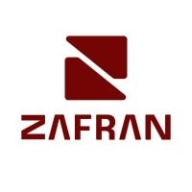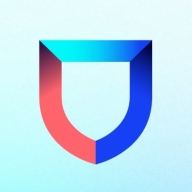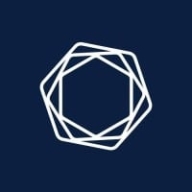


Tenable Nessus and Lacework FortiCNAPP offer security solutions but target different needs. Tenable Nessus excels in vulnerability scanning and integration, while Lacework FortiCNAPP is stronger in anomaly detection and compliance management.
Features: Tenable Nessus is recognized for comprehensive vulnerability assessments, rapid scanning, and VPR scores for prioritizing tasks. It also features a substantial vulnerability database and predictive risk assessment capabilities. Lacework FortiCNAPP allows effective analysis of security logs, simplifies compliance, and provides insights into user behavior and anomaly detection.
Room for Improvement: Tenable Nessus could enhance its reporting abilities, better manage large enterprise environments, and improve cloud feature integration. Lacework FortiCNAPP needs improvements in data governance, SIEM integration, and could benefit from simpler configuration and more intuitive data presentation.
Ease of Deployment and Customer Service: Tenable Nessus is preferred for on-premises and hybrid cloud deployments, offering strong, though sometimes slow, customer support. Lacework FortiCNAPP is optimal for public and private cloud environments, with responsive support though complex configurations can cause delays.
Pricing and ROI: Tenable Nessus provides good ROI with competitive pricing suitable for smaller organizations, though some consider it costly. Lacework FortiCNAPP is slightly more expensive, especially in large environments, yet has improved pricing structures, offering effective security insights contributing to favorable ROI.
| Product | Market Share (%) |
|---|---|
| Tenable Nessus | 7.7% |
| Zafran Security | 1.1% |
| Lacework FortiCNAPP | 1.3% |
| Other | 89.9% |



| Company Size | Count |
|---|---|
| Small Business | 4 |
| Midsize Enterprise | 4 |
| Large Enterprise | 3 |
| Company Size | Count |
|---|---|
| Small Business | 38 |
| Midsize Enterprise | 19 |
| Large Enterprise | 35 |
Zafran Security integrates with existing security tools to identify and mitigate vulnerabilities effectively, proving that most critical vulnerabilities are not exploitable, optimizing threat management.
Zafran Security introduces an innovative operating model for managing security threats and vulnerabilities. By leveraging the threat exposure management platform, it pinpoints and prioritizes exploitable vulnerabilities, reducing risk through immediate remediation. This platform enhances your hybrid cloud security by normalizing vulnerability signals and integrating specific IT context data, such as CVE runtime presence and internet asset reachability, into its analysis. No longer reliant on patch windows, Zafran Security allows you to manage risks actively.
What are the key features of Zafran Security?
What benefits can users expect from Zafran Security?
In industries where security is paramount, such as finance and healthcare, Zafran Security provides invaluable protection by ensuring that only exploitable vulnerabilities are addressed. It allows entities to maintain robust security measures while allocating resources efficiently, fitting seamlessly into existing security strategies.
Lacework FortiCNAPP provides robust cloud security, combining vulnerability management and multi-cloud insight with user-friendly controls, machine learning detection, and compliance support.
Lacework FortiCNAPP specializes in cloud security by merging machine learning anomaly detection with agent-based vulnerability management to offer detailed alerts and compliance reports. Its comprehensive approach allows continuous monitoring across AWS and Kubernetes, providing insights from an attacker's perspective. The platform offers automation and seamless Slack integration, facilitating collaborative and efficient cloud security management. Users value its ability to handle multi-cloud environments and scan IAC scripts, configurations, and compute nodes across AWS and GCP.
What are the key features?Organizations across sectors leverage Lacework FortiCNAPP for cloud security, focusing on compliance, security posture, and vulnerability management. It is widely used for monitoring AWS and Kubernetes environments, scanning IAC scripts, configurations, and securing compute nodes. It supports multi-cloud security posture management and log ingestion, enabling companies to maintain strong cloud infrastructures without dedicated security layers.
Tenable Nessus provides an efficient vulnerability management system with swift deployment and comprehensive scanning capabilities, making it an ideal choice for organizations seeking to enhance their security posture through effective threat detection and mitigation strategies.
Renowned for its top-tier vulnerability detection, Tenable Nessus offers a robust platform that integrates effortlessly across systems, enhancing threat management through automation, real-time monitoring, and customizable scanning options. Its broad asset coverage, including network devices and applications, coupled with ease of deployment, positions it as a go-to option for risk assessment and compliance. Organizations value its extensive reporting features and database, although they suggest enhancements in reporting formats and false positive detection. A more intuitive interface, improved cloud support, and competitive pricing models are sought after to cater to evolving enterprise needs.
What are the key features of Tenable Nessus?In industries such as finance, healthcare, and tech, Tenable Nessus is implemented for scanning internal and external networks, identifying risks, and ensuring data protection compliance. Organizations conduct regular scans to detect security vulnerabilities in servers and databases, leveraging its capabilities to strengthen their security frameworks while managing cloud infrastructures and enterprise networks efficiently.
We monitor all Vulnerability Management reviews to prevent fraudulent reviews and keep review quality high. We do not post reviews by company employees or direct competitors. We validate each review for authenticity via cross-reference with LinkedIn, and personal follow-up with the reviewer when necessary.